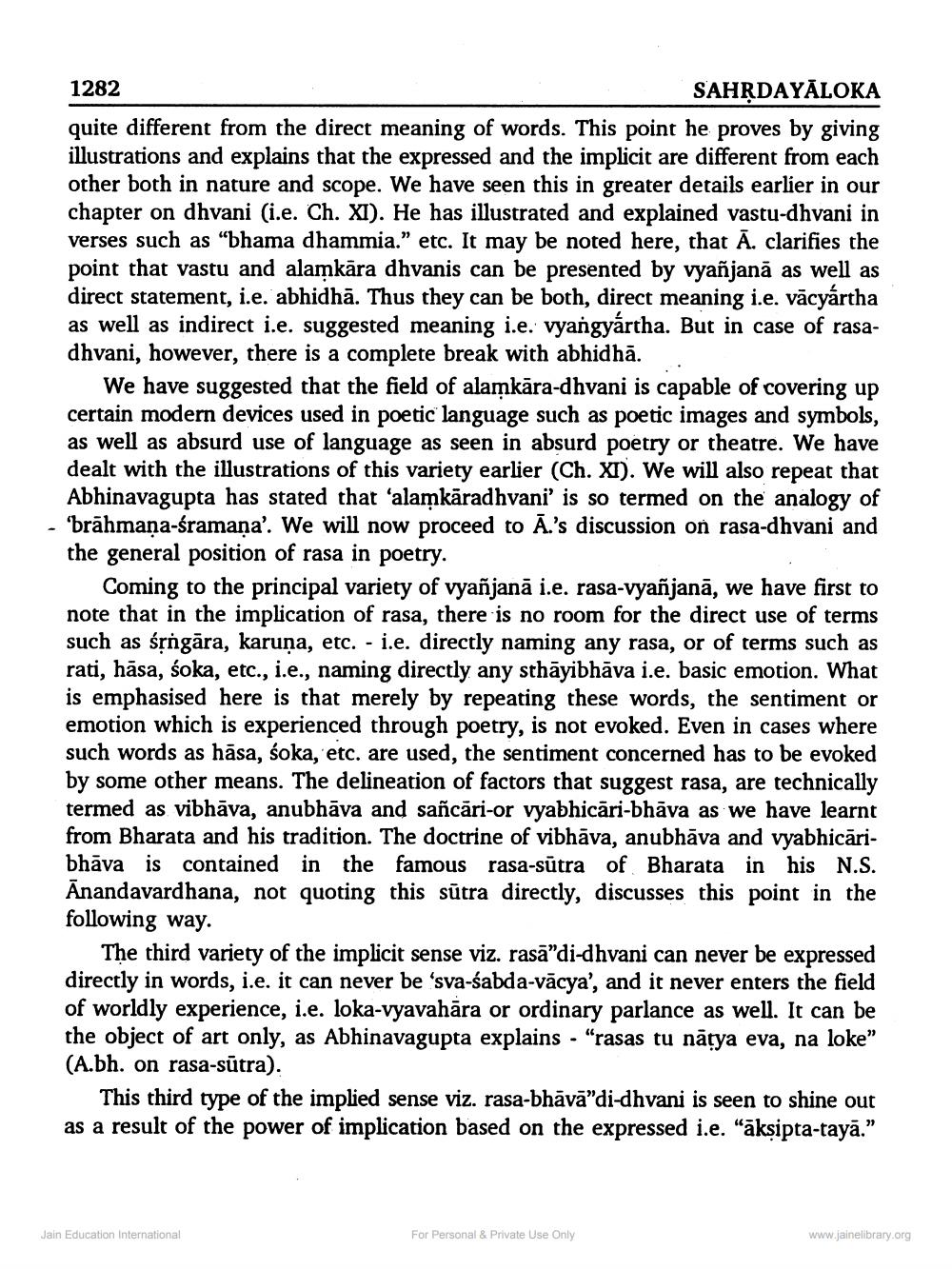________________
1282
SAHṚDAYALOKA
quite different from the direct meaning of words. This point he proves by giving illustrations and explains that the expressed and the implicit are different from each other both in nature and scope. We have seen this in greater details earlier in our chapter on dhvani (i.e. Ch. XI). He has illustrated and explained vastu-dhvani in verses such as "bhama dhammia." etc. It may be noted here, that A. clarifies the point that vastu and alamkara dhvanis can be presented by vyañjana as well as direct statement, i.e. abhidha. Thus they can be both, direct meaning i.e. vācyártha as well as indirect i.e. suggested meaning i.e. vyangyártha. But in case of rasadhvani, however, there is a complete break with abhidhā.
We have suggested that the field of alamkara-dhvani is capable of covering up certain modern devices used in poetic language such as poetic images and symbols, as well as absurd use of language as seen in absurd poetry or theatre. We have dealt with the illustrations of this variety earlier (Ch. XI). We will also repeat that Abhinavagupta has stated that 'alamkaradhvani' is so termed on the analogy of 'brāhmaṇa-śramaṇa'. We will now proceed to A.'s discussion on rasa-dhvani and the general position of rasa in poetry.
Coming to the principal variety of vyañjanā i.e. rasa-vyañjanā, we have first to note that in the implication of rasa, there is no room for the direct use of terms such as śṛngāra, karuņa, etc. - i.e. directly naming any rasa, or of terms such as rati, hāsa, śoka, etc., i.e., naming directly any sthayibhāva i.e. basic emotion. What is emphasised here is that merely by repeating these words, the sentiment or emotion which is experienced through poetry, is not evoked. Even in cases where such words as hāsa, śoka, etc. are used, the sentiment concerned has to be evoked by some other means. The delineation of factors that suggest rasa, are technically termed as vibhāva, anubhāva and sañcari-or vyabhicari-bhāva as we have learnt from Bharata and his tradition. The doctrine of vibhāva, anubhava and vyabhicāribhāva is contained in the famous rasa-sutra of Bharata in his N.S. Anandavardhana, not quoting this sūtra directly, discusses this point in the following way.
The third variety of the implicit sense viz. rasa"di-dhvani can never be expressed directly in words, i.e. it can never be 'sva-śabda-vācya', and it never enters the field of worldly experience, i.e. loka-vyavahāra or ordinary parlance as well. It can be the object of art only, as Abhinavagupta explains - "rasas tu natya eva, na loke" (A.bh. on rasa-sūtra).
This third type of the implied sense viz. rasa-bhāvā"di-dhvani is seen to shine out as a result of the power of implication based on the expressed i.e. "ākṣipta-taya."
Jain Education International
For Personal & Private Use Only
www.jainelibrary.org




